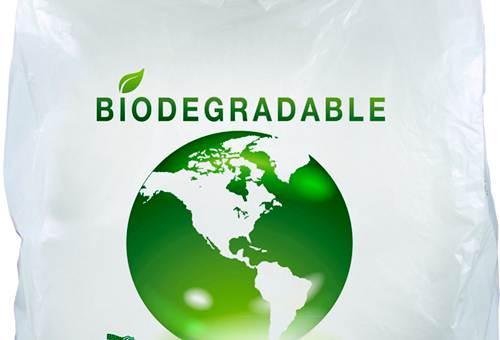Bioplastics
Depending on the material, the time it takes for bioplastics to be completely composted may take a different time and must be composted in commercial composting facilities, where higher composting temperatures can be achieved, and between 90 and 180 days. Most of the existing international standards require that 60% of the organism be degraded within 180 days, as well as some other standards that call for resins or compostable products. It is also important to distinguish between degradable and biodegradable and compostable, as these terms are often used interchangeably.
Biodegradable plastic
Biodegradable plastic is a type of plastic that will be degraded by natural microorganisms (such as bacteria, fungi, etc.) over a period of time. Note that there is no obligation to leave “non-toxic residues”, nor the time required for biodegradation.
Recycling is also important for the environment, and for this reason we also have a page on recycling bags with some interesting information.
Biodegradable plastic
Degradable plastics include all types of degradable plastics, including biodegradable and compostable plastics. However, non-biodegradable or non-compostable plastics generally use the “degradable plastic” label. Most products use biodegradable plastic labels, which will degrade due to physical and chemical influences. Biological activity is not a major part of the degradation of these products, or the process is too slow to be classified as biodegradable or compostable.

Types of degradable plastics
Starch based
Some degradable plastic products are made from corn starch. These materials mainly require an active microbial environment before they degrade, like landfills or compost, some will be completely degraded in this environment, while others will only puncture, while the plastic components will not degrade. The remaining plastic particles can be harmful to soil, birds and other wild animals and plants. While the use of renewable ingredients seems attractive in principle, they do not offer the best path for development.
Aliphatic
Another type of degradable plastic uses relatively expensive aliphatic polyesters. Similar to starch, they depend on the microbial activity of compost or landfills before they degrade.
Photodegradable
They will degrade when exposed to sunlight, but will not degrade in landfills, sewers, or other dark environments.
Biodegradable oxygen
The above products are degraded by the hydration degradation process, but the most useful and economical method in the new technology is to produce plastic, and the plastic is degraded by the OXO degradation process. The technology is based on the introduction of a small amount of degrading additives (usually 3%) into the conventional manufacturing process, thereby changing the properties of the plastic. It doesn't depend on microorganisms to break down plastics. Plastics begin to degrade immediately after manufacturing and accelerate degradation when exposed to heat, light or pressure. This process is irreversible and continues until the material is reduced only to carbon dioxide and water. Therefore, it will not leave petroleum polymer fragments in the ground.
Post time: Apr-07-2021






